Why is good design so important? And why is it such a big deal to spend precious time making sure what you put out into the world looks good? The fact of the matter is that people are naturally drawn to things that are visually attractive and impactful. Whether it be a flyer or presentation, a well-designed piece of content effectively catches your audience's attention and clearly communicates its value proposition. Because of this, I truly believe that spending a few extra minutes on making something look “good" is completely worth it.
I’d call myself a pretty visually-oriented person who does a lot of work related to marketing. Naturally, the subject of design comes up almost daily. The problem is that I’m not formally trained in graphic design or Adobe products in any kind of way which can be a bit of a challenge. As useful and in-depth Photoshop is, it’s also just as difficult to use and figure out. Its steep learning curve can be pretty intimidating, especially for first-time users.
That’s where Canva comes in. It’s an online design software that truly simplifies graphic design for everyone. I can recall countless times where I’d start making something on Photoshop, only to realize hours later that I could’ve spent a fraction of the time making it on Canva. I’ve personally used it for work (with the Niche Movement and other clients), for extracurricular activities (promoting a campus organization on social media) and even for personal use (resumes, business cards etc). Whether you’re a student, professional, designer, or blogger, it’s an invaluable resource.
Here are the basics. First, you choose your design format from a constantly updated list of templates including twitter posts, postcards, infographics, business cards, invitations, and even menus. Then, you choose from a variety of layout options. After that, you can add a personal touch by picking fonts, images, shapes, and text. And voila! Your very own design is complete and ready to post. (FYI - some of the content is only use-able after paying a small fee, but you can absolutely get away with using the program for free.)
And now for five essential design tips to use for your next project:
1. Balance - Make sure the most critical fact or aspect of your design stands out. for example, if you’re creating a flyer to promote a big event coming up, is it more important that your audience understands the name of the event or the date? Emphasize it by increasing or switching up the font to make it the focal point.
2. Font - On that note, aim to get a basic understanding of proper font usage. Try not to use too many typefaces so that your design is easier to read, and take time to choose the right font pairings. Also noted: use fonts like comic sans, papyrus, and impact at your own risk - due to their cheesy-looking nature, they're widely known as fonts to avoid!
3. Simplicity - When using an interface like Canva, with its abundance of graphics and options, you can easily get carried away with it and end up with a cluttered, unappealing design. Avoid this from happening by being sparing with the number colors, fonts, and icons. Less is truly more when it comes to design.
4. Color - When you're using a dark background, choose a brighter text color to make sure it stands, and vice versa. The goal is to make it easier for a viewer to take in the words and imagery. Contrast is key!
5. Have fun! Be creative! - One of my greatest design vices is getting carried away with using the same type format and layout over and over again. I have to remind myself that it's necessary to break from the mold and keep experimenting with new ideas. Even if your creation looks like crap to you, every bit of practice will help you improve and gain confidence in your design skills. Graphic Designer Paula Scher describes it perfectly with this quote:
“It’s through mistakes that you actually can grow. You have to get bad in order to get good.”
Written by Robyn Park

